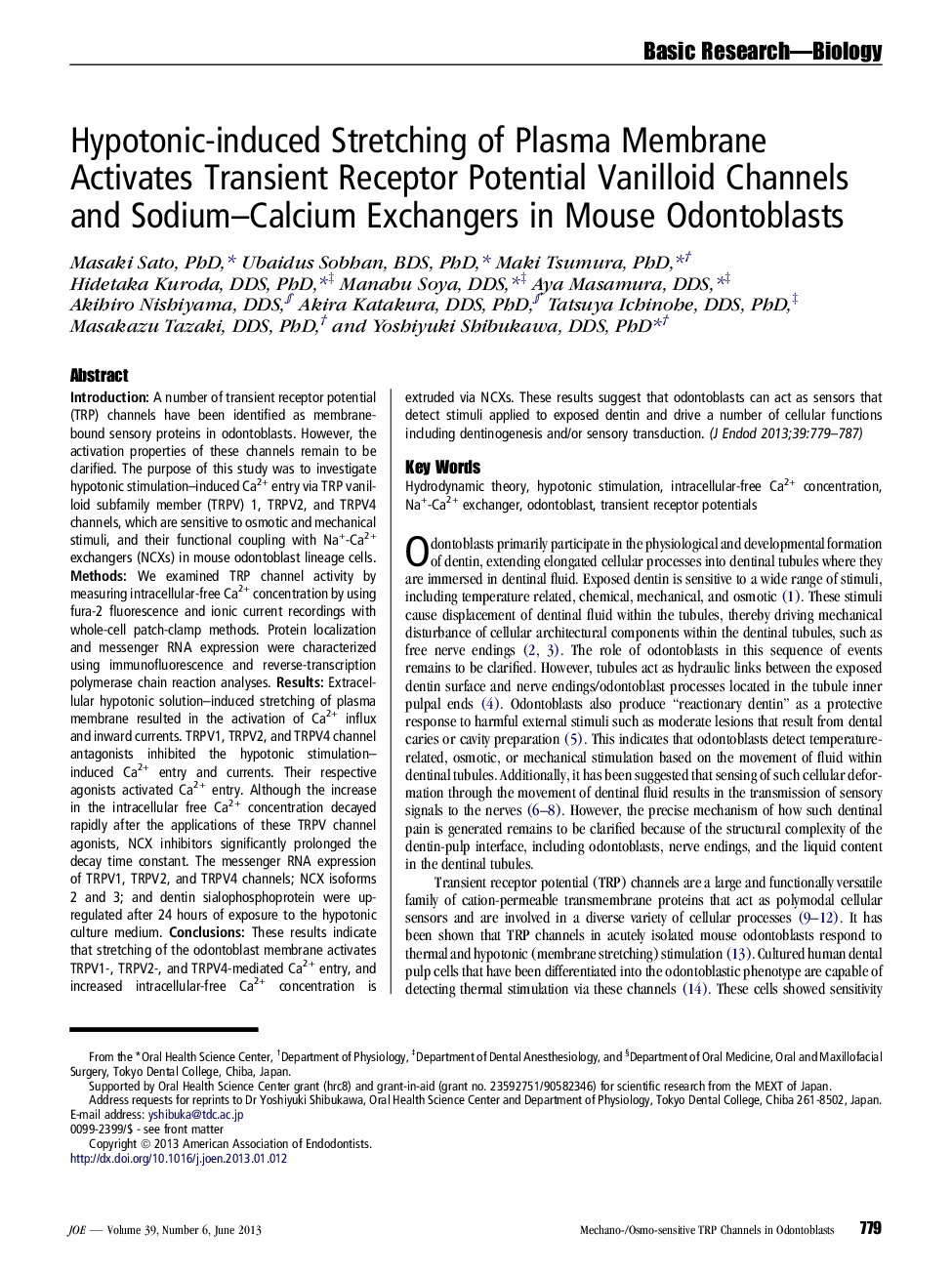| کد مقاله | کد نشریه | سال انتشار | مقاله انگلیسی | نسخه تمام متن |
|---|---|---|---|---|
| 3148767 | 1197417 | 2013 | 9 صفحه PDF | دانلود رایگان |

IntroductionA number of transient receptor potential (TRP) channels have been identified as membrane-bound sensory proteins in odontoblasts. However, the activation properties of these channels remain to be clarified. The purpose of this study was to investigate hypotonic stimulation–induced Ca2+ entry via TRP vanilloid subfamily member (TRPV) 1, TRPV2, and TRPV4 channels, which are sensitive to osmotic and mechanical stimuli, and their functional coupling with Na+-Ca2+ exchangers (NCXs) in mouse odontoblast lineage cells.MethodsWe examined TRP channel activity by measuring intracellular-free Ca2+ concentration by using fura-2 fluorescence and ionic current recordings with whole-cell patch-clamp methods. Protein localization and messenger RNA expression were characterized using immunofluorescence and reverse-transcription polymerase chain reaction analyses.ResultsExtracellular hypotonic solution–induced stretching of plasma membrane resulted in the activation of Ca2+ influx and inward currents. TRPV1, TRPV2, and TRPV4 channel antagonists inhibited the hypotonic stimulation–induced Ca2+ entry and currents. Their respective agonists activated Ca2+ entry. Although the increase in the intracellular free Ca2+ concentration decayed rapidly after the applications of these TRPV channel agonists, NCX inhibitors significantly prolonged the decay time constant. The messenger RNA expression of TRPV1, TRPV2, and TRPV4 channels; NCX isoforms 2 and 3; and dentin sialophosphoprotein were up-regulated after 24 hours of exposure to the hypotonic culture medium.ConclusionsThese results indicate that stretching of the odontoblast membrane activates TRPV1-, TRPV2-, and TRPV4-mediated Ca2+ entry, and increased intracellular-free Ca2+ concentration is extruded via NCXs. These results suggest that odontoblasts can act as sensors that detect stimuli applied to exposed dentin and drive a number of cellular functions including dentinogenesis and/or sensory transduction.
Journal: Journal of Endodontics - Volume 39, Issue 6, June 2013, Pages 779–787